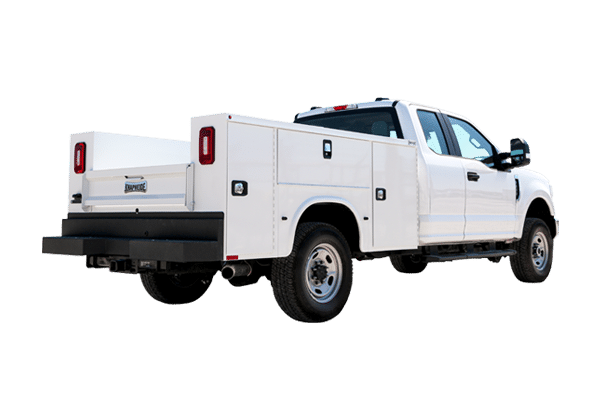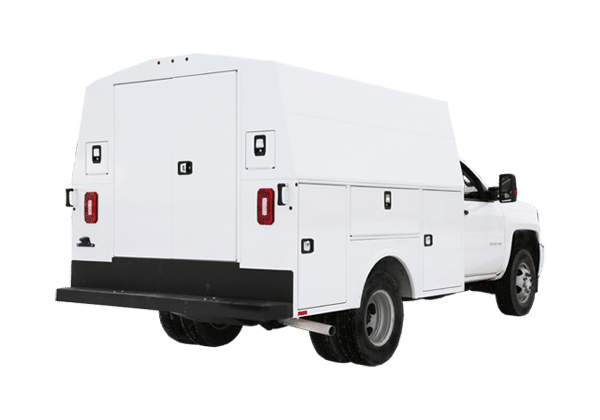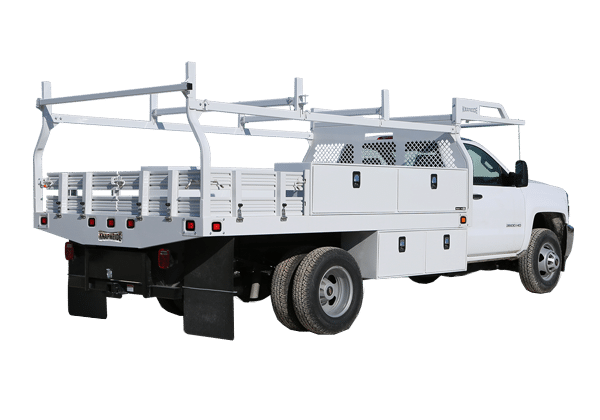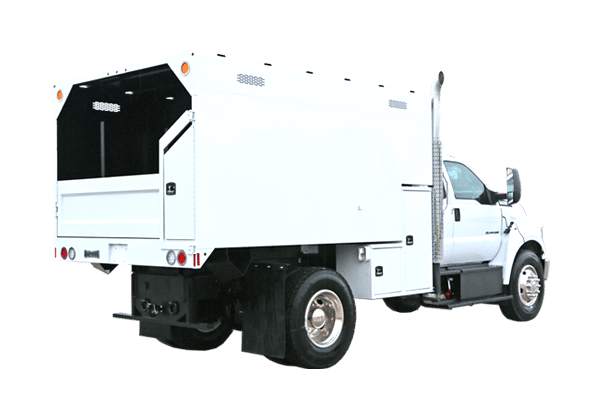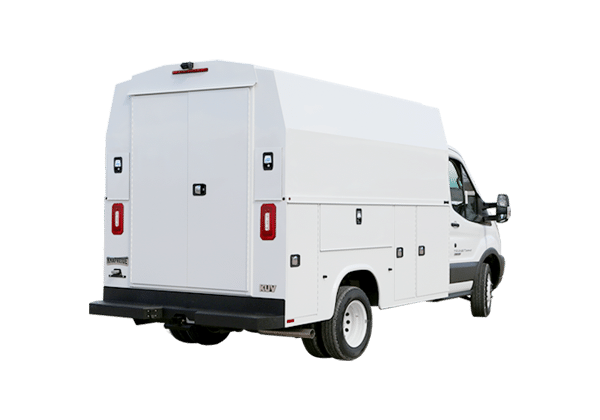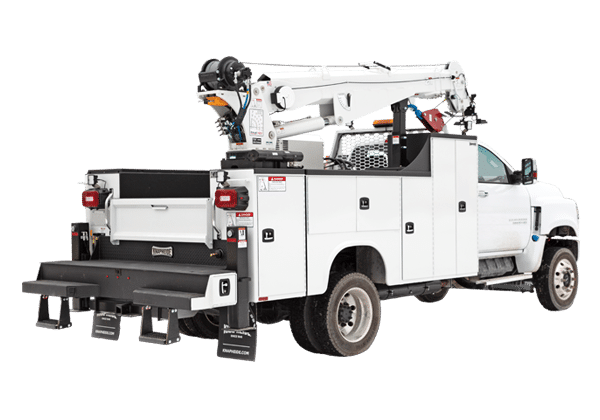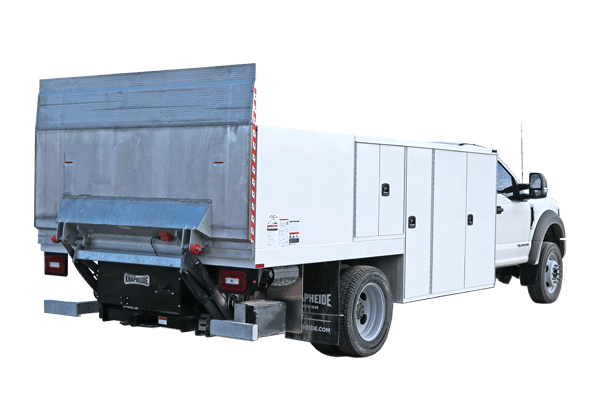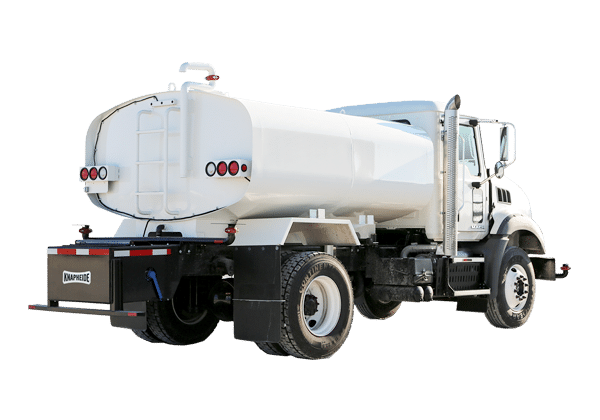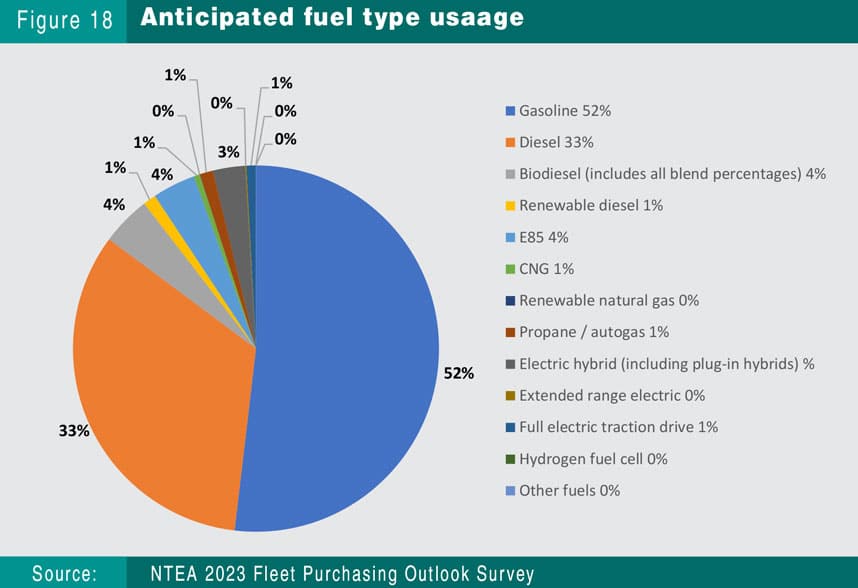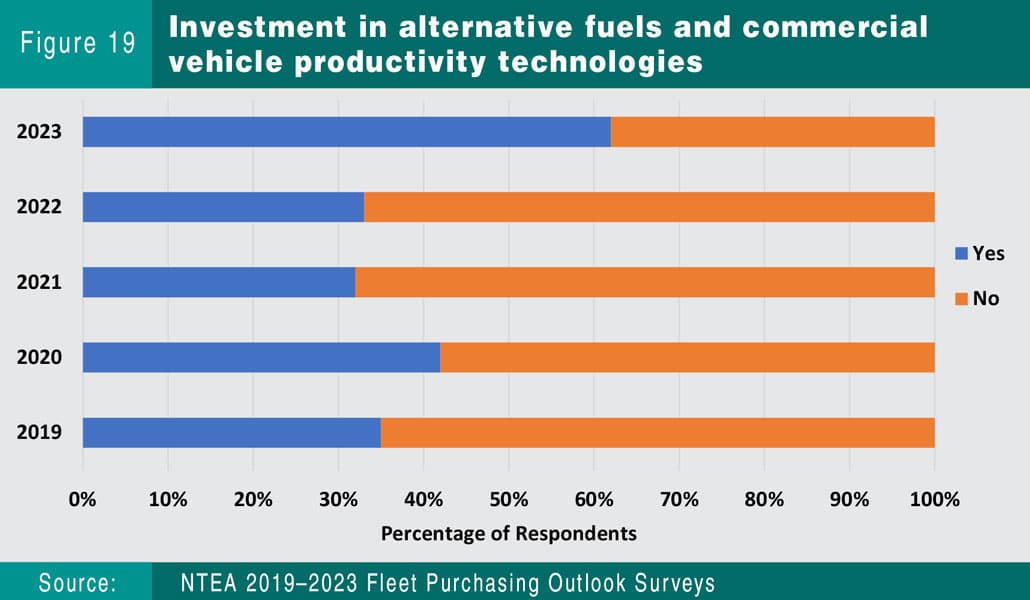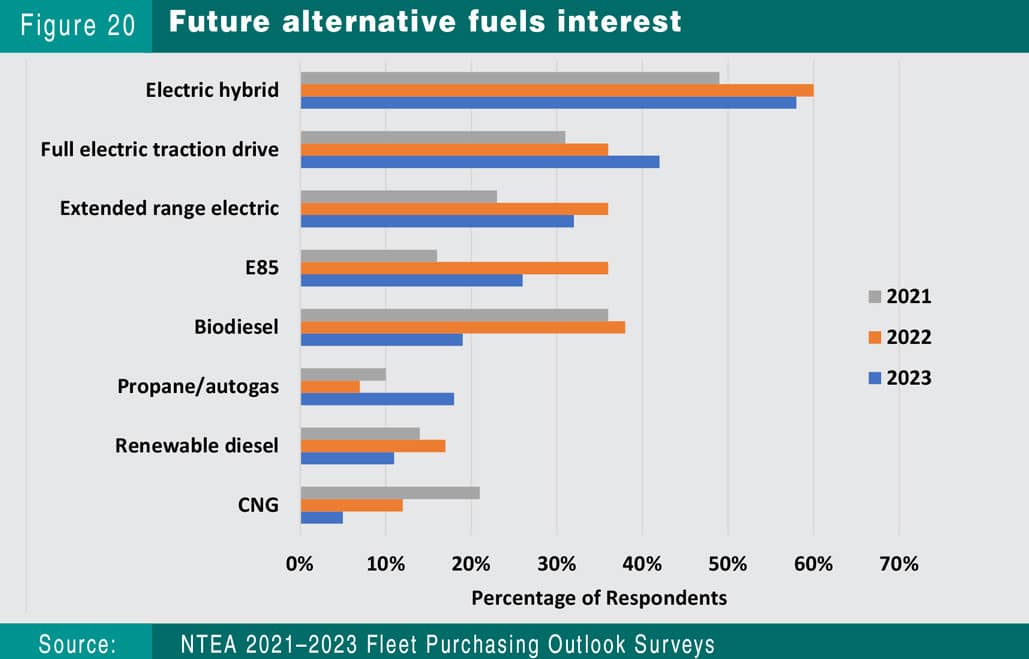Publish Date
April 14, 2023
Social Share
If you attended Work Truck Week earlier this year, you probably heard about or saw EVs (electric vehicles). While electricity is easily recognized by consumers as an alternative fuel source, there are actually a variety of sources available, although some will require more effort to obtain and maintain than others.
What are the different alternative fuel sources?
The U.S. Department of Energy’s website lists alternative fuel types as:

Available:
- Biodiesel
- Electricity (all-electric or plug-in hybrid)
- Ethanol (E10, E15, E85, etc.)
- Hydrogen
- Natural Gas (CNG & LNG)
- Propane (LPG)
- Renewable Diesel (previously known as green diesel)
Emerging:
- Biobutanol
- Dimethyl ether
- Methanol (used in the 1990s, but no longer used for commercial transportation fuel)
- Renewable Gasoline (green or drop-in gasoline
Why is everyone talking about EVs and alternative fuel?
Growing concerns over energy security and the environment have significantly increased interest in alternative fuel sources. Mainstream utilization of alternative fuels could lead to a reduction in the United States’ fuel imports and carbon/greenhouse emissions.
Will alternative fuel be widely used this year?
Although more are interested in alternative fuel sources, fleets still anticipate relying heavily on gasoline and diesel in 2023. It’s important to note that the graph below does not distinguish between 100% gasoline and gasoline/ethanol blends, other than E85. Blends with less than 10% ethanol are widely available and can be used interchangeably with 100% gasoline. In fact, 98% of all gasoline sold in the U.S. is actually a blend. So, while 52% of fleets’ fuel will be gasoline, it is unclear whether it is fully-traditional or partially alternative.
Graph Correction: Electric hybrids (including plug-in hybrids) 3%
Will fleets start adding more alternative fuel vehicles?
According to the 2023 Fleet Purchasing Outlook report published by NTEA, 62% of fleets are investing in alternative fuel and technologies in 2023, nearly double that of last year’s 33% (n.d.). At this time, it is unclear whether the fleets will purchase new vehicles or convert their current vehicles for alternative fuel consumption. Aside from the cost, the decision is heavily reliant on which type of alternative fuel source the fleet chooses to switch to.
Which types of alternative fuel sources are fleets interested in using?
It probably comes as no surprise that fleets continued to show the most interest in electric options. A big factor is likely the existing nationwide infrastructure supporting electricity as an alternative fuel source.
“Tens of thousands of electric vehicle (EV) charging stations are available in the United States. These charging stations are being installed in key areas throughout the country” (Alternative Fuels Data Center: Electric Vehicle Charging Stations, n.d.).
While smaller towns may not have tons of options for charging, the number of supporting stations still heavily outweigh that of other sources, like E85, which is only available at around 4,200 fueling stations.
Other fuel sources, like CNG, are riskier for fleets without a central refueling station, as there were fewer than 900 in the U.S. in 2021 (Alternative Fuels Data Center: Electric Vehicle Charging Stations, n.d.). For fuel sources without widespread availability, fleets will need to invest in infrastructure to support their refueling needs, which may exceed the savings they’d receive in savings.
Future of fuel?
As government agencies continue to provide incentives for alternative fuel vehicles and regulate emissions, it’s likely that we will see an increase in the popularity of alternative fuel sources. However, until U.S. infrastructure can support these alternative fuel sources as widely as traditional fuel, we will continue to see a large portion of the transportation industry rely on gasoline and diesel.
References:
Alternative Fuels Data Center: Electric Vehicle Charging Stations. (n.d.). Afdc.energy.gov. Retrieved April 6, 2023, from https://afdc.energy.gov/fuels/electricity_stations.html
NTEA. (n.d.). 2023 Fleet Purchasing Outlook [Review of 2023 Fleet Purchasing Outlook]. In NTEA (pp. 3–19). Retrieved March 2, 2023, from https://www.ntea.com/fpo

